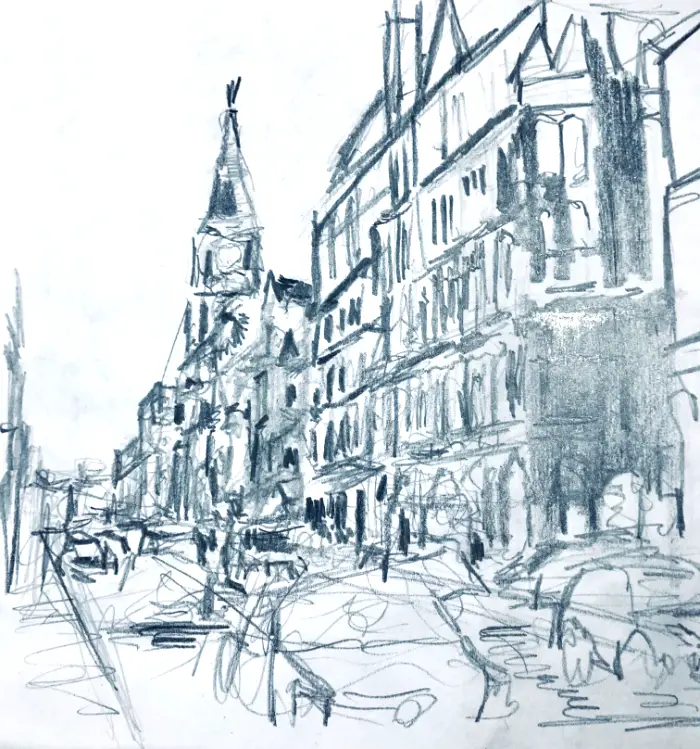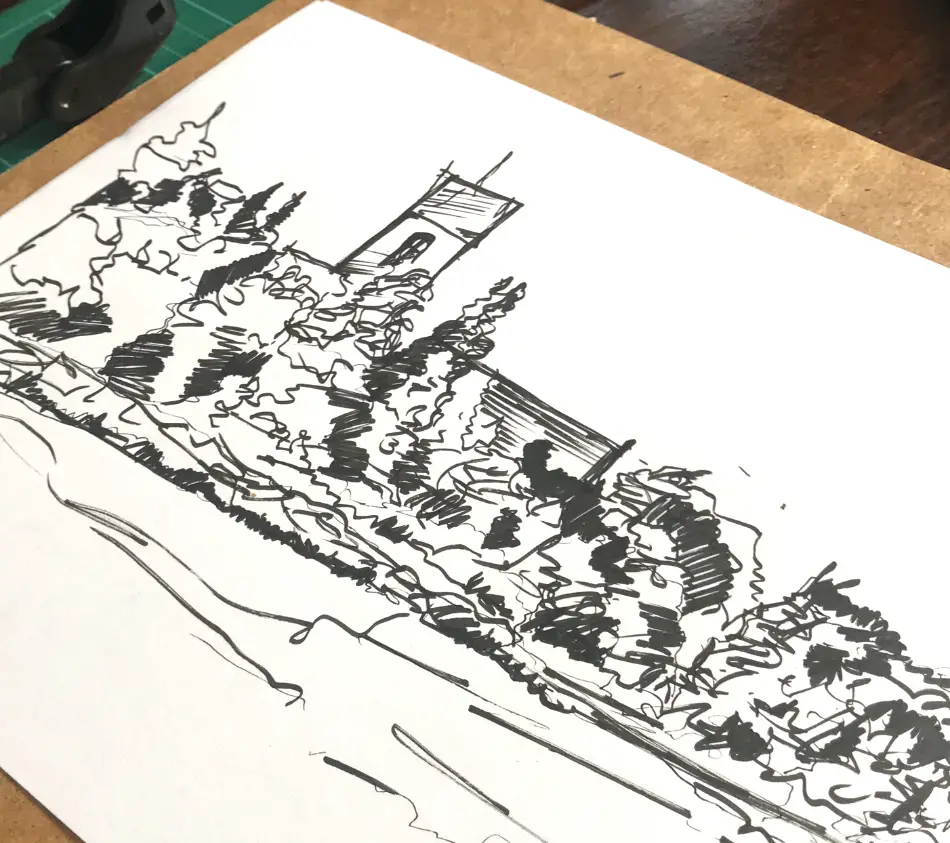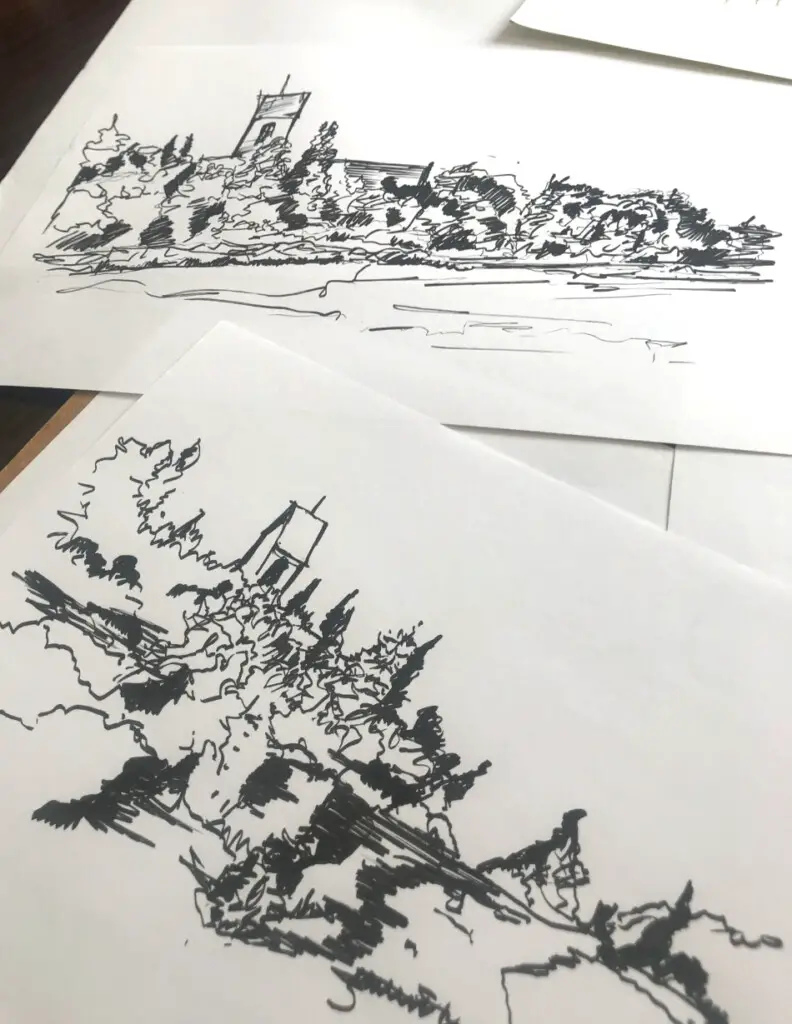Sketching on location is an excellent way for artists to capture the characteristics of a neighborhood or location that you cannot seize when you're using an image or your memory as your reference point.
It's relatively easy to draw on location. You only need your sketchbook, a pen, and a comfortable spot, and you're good to go. However, a few other features come into play when you want to sketch on location. Take a look at some tips that you can take advantage of for more comfortable and practical sketching.
A Guide to Sketching Outside
Before you set out to sketch outside, you need to take care of a few things that will make your encounter a smooth one.
· Plan
What location do you want to sketch? Is it a building, a street, or a monument? Plan ahead so that you know the logistics that you have to take care of to make your work easier on D-day.
· Perching spot
You have to know the position you'll sit as you sketch away because of the lighting. The right question to ask yourself is, what aspects of the site do you want to represent or record? Do you intend to sketch the sun and the shadows it casts? And what angles do you prefer? These will help you determine where you will set base as you draw on location.
· Buy the right tools
One aspect that affects the appearance of your sketches is the quality of the tools you draw with. If you're going to use a pen to draw, think about getting heavy or thick paper.
You can determine the thickness of the sheets by reading the manufacturer's details about the product. You can also feel the sheets individually so you can find out their texture.
· Learn speed sketching
If you're planning to capture the sunlight and shadows at a particular angle, you have to practice speed sketching. This helps you to complete your sketch within a short time, allowing you to draw your image as you had planned.
Sketching on Location in the City

Location sketching is among the most efficient ways to help an artist improve their drawing skills. In all honesty, you cannot capture all your environment's intricacies, more so the moving subjects. This is why you have to determine the kind of story you want to tell through the drawing.
The easiest way to modify your story is to pick a focus point. Use that focal point to grab the attention of your viewer. If your point of reference is a building, what would you like for the viewer to take home from?
Remember that artists use different techniques to draw different things. So, you might want to research the techniques that are ideal for your kind of sketch.
For instance, if you want to capture the essence of a building when drawing on location, it would help determine how to draw architectural buildings before your assignment date and choose one that works for you.
Pay attention to the details on the landscape so that you recreate a convincing piece of art. And while you're at it, avoid smudging your work. Using a fine tip pen can help you reduce blotting instances. It all boils down to shopping for quality.
Related Posts:
- How to Draw Landscapes in Pen and Ink
- How to Draw Realistic Rain
- How to Draw Clouds with Charcoal
- How to Draw Clouds with Pen
Urban Sketching Tools and Equipment
As is the case with other types of sketching, a few items are essential to urban sketching. These tools determine the success or failure of your venture.
Some of the items you have to carry should include:
· A stool
The benches that the city council provides at the park can prove uncomfortable, and especially you'll be seated for extended periods. They offer no back support and are too stiff. You want a seat that allows you to move about comfortably as you sketch.
Bring with you a stool and a cushion if you must. These will help you to sit upright for longer. Your neck and back won't suffer the harsh consequences of sitting for long when you use a stool.
· A sketching pad
This is probably the essential tool that you need to carry with you—the heavier the paper, the better the quality. Check for notepads that have at least 120gsm paper. These won't bleed through, especially if you use a water-based pen.
· Fine tip pens
The trick to getting flawless results is to buy fine-tip pens. The beauty of using these pens is that they do not damage the paper as you sketch. The tips release ink smoothly, a feature that keeps the paper from bleeding through.
· Watercolor tray and some water
If you plan on adding a dash of color to your sketch, you want to consider taking with you a watercolor tray and a bottle of water. Remember to carry some brushes too.
· A camera
Sometimes you may choose a location that has several intricacies. If you are not sure you captured all the details you wanted, a quick photo will help you stay in perspective.
SKetching on Location: In the Countryside or Coastline
Location sketching can be tricky, particularly if you have not yet chosen a site. And if you're torn between the countryside of the coastline, things could get a bit murky. However, you can sift through some of these factors to decide whether the coast or countryside is ideal for you.
What do you want to achieve through this sketch? Do you want to sharpen your location sketching skills? Do you want to sell the painting, or is it for personal use? Have you ever sketched a similar location before? If you are looking to finetune your drawing skills, then you should go to the countryside.
Such locations have so much detail, which forces you to pay attention to your surroundings. On the other hand, if you want to increase your drawing techniques, the coast would be ideal.
Spots by the sea have different subjects that require you to use varying grains on your painting. If you've done a sketch of a similar location before, it is only fair to pick the remaining location and try your luck on it.
Sketching on Location When Travelling
Most appealing sketches are those that artists draw during a cruise, vacation, or road trip. Sketching on location as you travel the world has a way of making you see the world differently. It is an encounter that helps you slow down and take in the beauty of every place you visit.
It is an excellent idea for you as an artist to carry along a drawing pad every time you travel if you want to capture new things often. Considering that you may not have enough time to take in the scenery and recreate it on your sketching pad, always carry a pencil.
This tool helps you to sketch your site lightly. An outline helps to keep your drawing in perspective as you wait to add more body and life to it using other drawing tools. You can always fill in the details with a pen as you go once you have a draft.
If you are a newbie, you can limit the number of supplies you carry with you to a pencil, drawing paper, and watercolor pad. Carrying too many supplies will increase your luggage weight, which can be a bummer if you don't end up using these tools.
An Approach to Drawing You Can Try
Before you start sketching, think of your work as a masterpiece. If this were a meal that you're preparing for someone special, how would you spice it? Sketching on location allows you to be as free as possible since there are no rules, meaning you cannot make any mistakes.
Use your imagination to recreate scenes on paper. One important thing to note is that you cannot sketch a specific type of location several times and expect to grow as an artist. You have to spread your wings and visit new places often.
Trying out new sites gives you the confidence to try out new techniques. Consequently, you learn new methods along the way. It would be best if you also tried emerging trends that will help you ease your work. Applications are some of the more recent trends that help artists gain results much faster than when they do things traditionally.
Sumary
Sketching begins in the mind. You have to visualize the sketch before you put it on paper. You can even give yourself a head start with the help of an app that can recreate your ideas in minutes. Sketching on location requires a significant amount of patience.
Carry all the tools that will make your work easier. Remember to pack some water and light snacks that will help you replenish your energy, especially if you're working under the hot sun. And if you're chasing the sun, take a photo of the location first before you start sketching.




